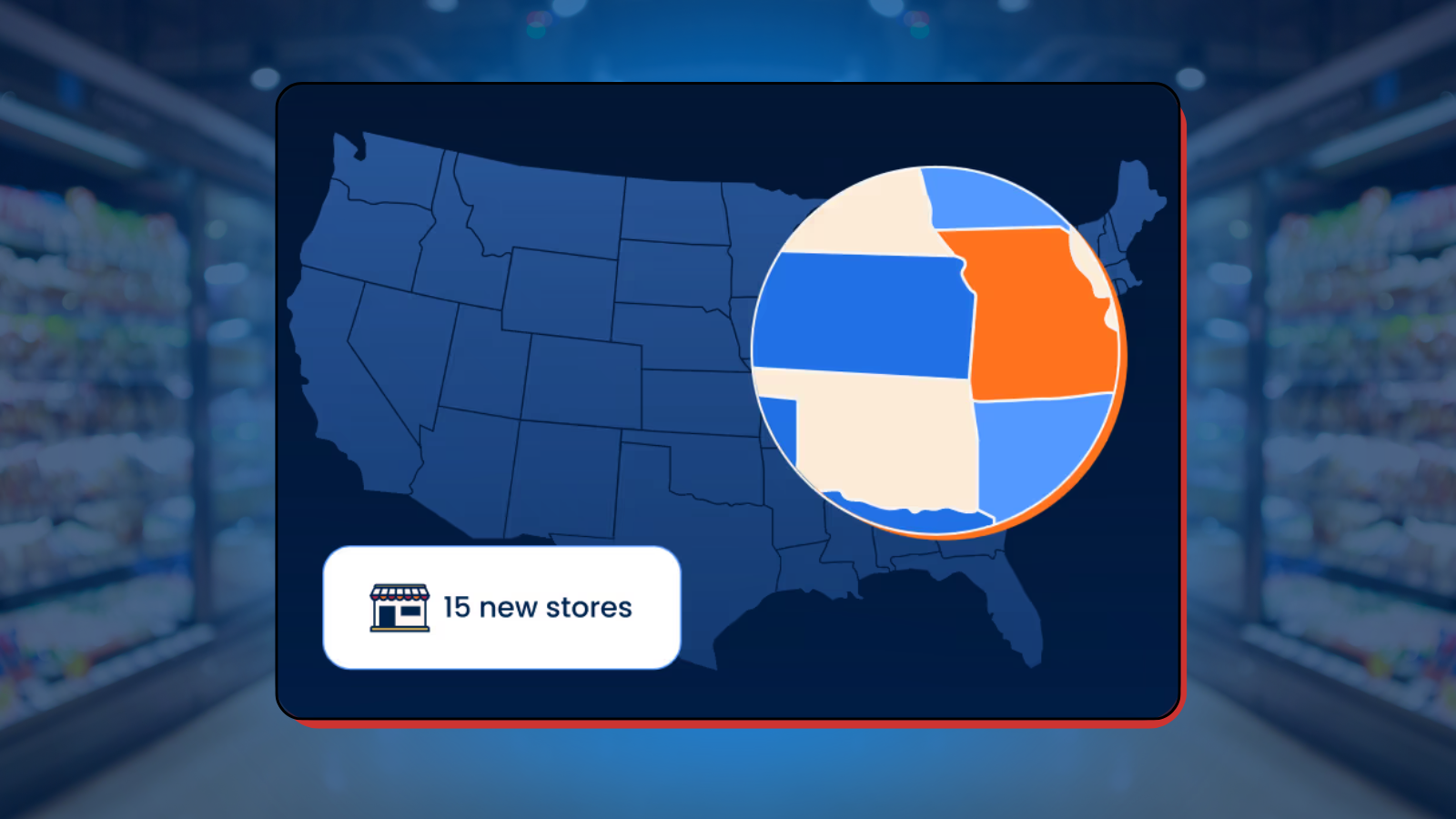How to Turn Your Rebate Campaign Into a Repeat Purchase Engine


Rebates are everywhere—but most brands aren’t using them to their full potential.
Too often, digital rebate campaigns are treated like one-and-done discounting tools. You run a promo, get a short spike in trial, and… that’s it. No follow-up. No repurchase. No long-term value.
Rebates have more potential than you think. When done right, they can become powerful engines for repeat purchases and retail velocity. Here’s how.
1. Start With High-Intent Shoppers
Not all trial is created equal. If your rebate is attracting deal hunters who’ll never buy again, you’re wasting your budget.
To turn trial into repeat purchases, you need high-intent shoppers:
- People who opt in directly through your campaign.
- People who shop at full price when no promo is running.
- People whose values or behaviors match your product.
It's essential to find tools that help you reach these consumers by identifying who’s most likely to try—and return.
2. Capture Zero-Party Data at Checkout
Here’s where the magic happens. When someone redeems a rebate, don’t just reimburse them and move on. Ask a few smart, strategic questions:
- Where did you buy it?
- What made you try it?
- Would you buy again?
- How would you describe yourself?
This data helps you understand who is trying your product and why—so you can build smarter segments and future campaigns.
3. Build an Always-On Repurchase Flow
Rebate done? That’s where a lot of brands make the mistake of stopping. But this is where your repeat engine should kick in.
Set up a post-rebate flow that re-engages customers within 7–14 days of trial:
- Send a “Thanks for trying!” email or SMS
- Offer a follow-up discount or retail reminder
- Personalize your message based on their survey responses
This simple flow can significantly increase your chances of a second purchase—and move you from trial to traction.
4. Use Store-Level Data to Retarget Smarter
If you know where trial happened, you can retarget those customers with store-specific reminders and paid media.
Example: If 82% of redemptions came from a specific Whole Foods region, double down there with in-store sampling, targeted ads, or retailer-specific offers.
The more local and relevant your message, the more likely you are to drive repeat purchase—and prove performance to your retail partners.
5. Report on Retention, Not Just Redemptions
Success isn’t just how many people redeemed your offer. It’s how many came back.
Use your post-rebate flows and survey insights to measure:
- Repurchase intent
- Actual second/third purchase activity
- Top-performing regions or shopper profiles
These are the KPIs that matter when you're building a true repeat engine—and when you’re trying to grow your ACV.
Remember, rebates are a means to an end—not the end itself. If you’re only using them to spike velocity, you’re missing the bigger picture –– AND opportunity.
With the right targeting, data collection, and follow-up strategy, a rebate can become the first step in a long, loyal customer journey.
Ready to Transform Your Customer Acquisition?
We’d love to help you refine your strategy. Let’s chat and explore how we can drive growth together.
How to Turn Your Rebate Campaign Into a Repeat Purchase Engine

Rebates are everywhere—but most brands aren’t using them to their full potential.
Too often, digital rebate campaigns are treated like one-and-done discounting tools. You run a promo, get a short spike in trial, and… that’s it. No follow-up. No repurchase. No long-term value.
Rebates have more potential than you think. When done right, they can become powerful engines for repeat purchases and retail velocity. Here’s how.
1. Start With High-Intent Shoppers
Not all trial is created equal. If your rebate is attracting deal hunters who’ll never buy again, you’re wasting your budget.
To turn trial into repeat purchases, you need high-intent shoppers:
- People who opt in directly through your campaign.
- People who shop at full price when no promo is running.
- People whose values or behaviors match your product.
It's essential to find tools that help you reach these consumers by identifying who’s most likely to try—and return.
2. Capture Zero-Party Data at Checkout
Here’s where the magic happens. When someone redeems a rebate, don’t just reimburse them and move on. Ask a few smart, strategic questions:
- Where did you buy it?
- What made you try it?
- Would you buy again?
- How would you describe yourself?
This data helps you understand who is trying your product and why—so you can build smarter segments and future campaigns.
3. Build an Always-On Repurchase Flow
Rebate done? That’s where a lot of brands make the mistake of stopping. But this is where your repeat engine should kick in.
Set up a post-rebate flow that re-engages customers within 7–14 days of trial:
- Send a “Thanks for trying!” email or SMS
- Offer a follow-up discount or retail reminder
- Personalize your message based on their survey responses
This simple flow can significantly increase your chances of a second purchase—and move you from trial to traction.
4. Use Store-Level Data to Retarget Smarter
If you know where trial happened, you can retarget those customers with store-specific reminders and paid media.
Example: If 82% of redemptions came from a specific Whole Foods region, double down there with in-store sampling, targeted ads, or retailer-specific offers.
The more local and relevant your message, the more likely you are to drive repeat purchase—and prove performance to your retail partners.
5. Report on Retention, Not Just Redemptions
Success isn’t just how many people redeemed your offer. It’s how many came back.
Use your post-rebate flows and survey insights to measure:
- Repurchase intent
- Actual second/third purchase activity
- Top-performing regions or shopper profiles
These are the KPIs that matter when you're building a true repeat engine—and when you’re trying to grow your ACV.
Remember, rebates are a means to an end—not the end itself. If you’re only using them to spike velocity, you’re missing the bigger picture –– AND opportunity.
With the right targeting, data collection, and follow-up strategy, a rebate can become the first step in a long, loyal customer journey.
How to Turn Your Rebate Campaign Into a Repeat Purchase Engine

Rebates are everywhere—but most brands aren’t using them to their full potential.
Too often, digital rebate campaigns are treated like one-and-done discounting tools. You run a promo, get a short spike in trial, and… that’s it. No follow-up. No repurchase. No long-term value.
Rebates have more potential than you think. When done right, they can become powerful engines for repeat purchases and retail velocity. Here’s how.
1. Start With High-Intent Shoppers
Not all trial is created equal. If your rebate is attracting deal hunters who’ll never buy again, you’re wasting your budget.
To turn trial into repeat purchases, you need high-intent shoppers:
- People who opt in directly through your campaign.
- People who shop at full price when no promo is running.
- People whose values or behaviors match your product.
It's essential to find tools that help you reach these consumers by identifying who’s most likely to try—and return.
2. Capture Zero-Party Data at Checkout
Here’s where the magic happens. When someone redeems a rebate, don’t just reimburse them and move on. Ask a few smart, strategic questions:
- Where did you buy it?
- What made you try it?
- Would you buy again?
- How would you describe yourself?
This data helps you understand who is trying your product and why—so you can build smarter segments and future campaigns.
3. Build an Always-On Repurchase Flow
Rebate done? That’s where a lot of brands make the mistake of stopping. But this is where your repeat engine should kick in.
Set up a post-rebate flow that re-engages customers within 7–14 days of trial:
- Send a “Thanks for trying!” email or SMS
- Offer a follow-up discount or retail reminder
- Personalize your message based on their survey responses
This simple flow can significantly increase your chances of a second purchase—and move you from trial to traction.
4. Use Store-Level Data to Retarget Smarter
If you know where trial happened, you can retarget those customers with store-specific reminders and paid media.
Example: If 82% of redemptions came from a specific Whole Foods region, double down there with in-store sampling, targeted ads, or retailer-specific offers.
The more local and relevant your message, the more likely you are to drive repeat purchase—and prove performance to your retail partners.
5. Report on Retention, Not Just Redemptions
Success isn’t just how many people redeemed your offer. It’s how many came back.
Use your post-rebate flows and survey insights to measure:
- Repurchase intent
- Actual second/third purchase activity
- Top-performing regions or shopper profiles
These are the KPIs that matter when you're building a true repeat engine—and when you’re trying to grow your ACV.
Remember, rebates are a means to an end—not the end itself. If you’re only using them to spike velocity, you’re missing the bigger picture –– AND opportunity.
With the right targeting, data collection, and follow-up strategy, a rebate can become the first step in a long, loyal customer journey.
Hosted By

.avif)
%20(Landscape))%20(3).png)




